Home Tags Posts tagged with "smartphones"
smartphones
If you still think mobile sites are a passing trend, you have fallen behind your consumers and your fellow businesses. With consumers and businessmen more and more obsessed with smartphones and the mobile sales conversions rising even higher, mobile optimization is a necessary move to successfully establish your online presence. Here are five ways that mobile optimization is a must for every business’ success:
1. Mobile is Important to Consumers

Image via Flickr by Janitors
According to a Pew Research survey, almost 60 percent of Americans owned a smartphone as of January 2014. And those same Americans use their phone for everything. It’s their camera, their calendar, and their entertainment when they are bored. They invest in everything from car chargers and cradles to smartphone speakers so they that their phone can forever act as the extension of their arm that it is. It is radio, GPS, and email, in addition to such menial tasks as phone calls and texts.
And this smartphone co-dependency transfers to the way they consume products and interact with businesses. Mobile sales rose over 50 percent in 2013, according to Google’s new Mobile Playbook, with almost a fifth of all sales now coming from smartphones and tablets. And if your business doesn’t have a functional mobile site, Google found that almost half of consumers won’t hesitate to turn to a competitor.
2. Mobile is Under-Appreciated
While those numbers should be enough to motivate every business into getting a clean mobile site, GetElastic’s infographic on mobile websites reported that just over a third of businesses had any sort of mobile site in 2013, meaning they are handing off a significant number of future customers every day to more tech-savvy companies.
And while having a mobile site is good, it isn’t the end of the road for mobile interaction. You need to have the right information clearly visible. That means address and hours for brick-and-mortar businesses and an easy-to-use shopping cart for e-commerce companies. Bottom line? Mobile isn’t an upcoming trend. It’s the standard, and if you don’t have it, you are behind.
3. The Mobile Tablet Market Should Be Tapped
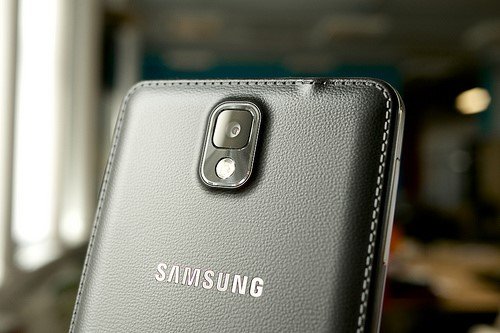
Image via Flickr by Janitors
Even though tablets are still a growing market, GetElastic found that tablet users are the most likely to make a purchase, with 72 percent of tablet users making at least one purchase on their tablet a week. In fact, over half of tablet users said that they preferred shopping on their tablet to other electronic devices, making them over three times as likely to make a purchase than smartphone users.
If you are eager to turn mobile tablet views into sales, your site needs to be simple, clean and fast. GetElastic noted that almost all online shopping carts (97 percent) are abandoned due to a cluttered screen.
4. Mobile Optimization is Just the Beginning of Consumer Interaction
Finally, once someone has been to your mobile site, GetElastic found that they are almost guaranteed to engage your business in additional ways. Over 70 percent of users will continue to interact with your brand once they’ve seen your mobile site, whether that is by continuing their research or visiting your store. A quarter of visitors will visit your retail site, and 17 percent will make a purchase afterwards, too.
5. Mobile is Fast
Mobile is an on-the-go and on-a-whim kind of marketplace, so what happens when a mobile site is slow? We already know that a poor mobile experience could send up to 40 percent of consumers to competitors. But over half of the people who do make mobile purchases will do so within an hour of their mobile search. That gives you 60 minutes or less to have a consumer browse your merchandise, pick a product, put it in their shopping cart, and pay for it.
If the site is slow and cluttered, that 60 minutes blows by and users will be much more likely to abandon their shopping. And if consumers have experienced a slow mobile site—slow enough to deter them from purchasing something—43 percent said they weren’t likely to return.
Like the epic intro to some Tolkien-esque fantasy film, it seems that the music industry looks set to be thrown into chaos – with broken hearts at the centre of a monumental music streaming battle. The announcement of the Dr. Dre endorsed rival to Spotify’s streaming monopoly has rallied the troops and set the PR war machine to work – with a number of interesting, and sometimes speculative announcements from the service’s marketing department designed to keep consumers on-side.

- Erik Stattin / CC BY-SA
The latest of these announcements hopes to take those broken hearts and recommend a suitably sentimental love-song to remedy the pain. That is, Spotify have announced that, in the near future they hope to be able to monitor users heart-beats to provide a recommendation system based on mood and/or likelihood of cardiac arrest. It seems that Dr Dre’s Beats has got Spotify’s pulse racing.
Smartphone for Smart Recommendations
This latest idea from Spotify will use device to device communication from companies such as Deutsche Telekom to monitor things like pulse, temperature, sleep patterns and body motion. The aim is to build a picture of individual users that enables the service to recommend music, linked not only to listening habits, but also to mood and disposition from sensors within your smartphone.
The data will be collected from your smartphone and then sent wirelessly to your Spotify account – although details on exactly how this will work are still very much unclear. It is a safe bet though that, with the meteoric rise and “one box to rule them all” philosophy of the smartphone, these features will appear sooner rather than later. In the meantime, keep your eyes peeled for the latest announcements from an increasingly worried Spotify.
BlackBerry has filed a copyright infringement lawsuit against the company co-founded by Ryan Seacrest that makes a keyboard case for the iPhone.
On Friday, BlackBerry filed a lawsuit against Typo Products LLC, a company that makes a slip-on keyboard designed to fit the iPhone 5 and 5S.
The company Los Angeles-based company was founded by entrepreneur Laurence Hallier and television personality Ryan Seacrest. The company’s flagship product, the “Typo Keyboard,” was conceived to make typing on the iPhone quicker and less prone to typos.
Now the company might be wishing it went a little slower. The keyboard, BlackBerry alleges, violates the company’s intellectual property rights for copying BlackBerry’s own keyboard designs.

BlackBerry has filed a copyright infringement lawsuit against the company co-founded by Ryan Seacrest that makes a keyboard case for the iPhone
Instead of developing its own design, “Typo chose to copy BlackBerry’s iconic keyboard design as embodied in, among others, BlackBerry’s Q10 smartphone,” the lawsuit alleges, which was filed Friday in the U.S. district court in the Northern District of California.
“This is a blatant infringement against BlackBerry’s iconic keyboard, and we will vigorously protect our intellectual property against any company that attempts to copy our unique design,” said Steve Zipperstein, BlackBerry’s general counsel and chief legal officer, in a statement.
The suit seeks a trial by jury to obtain compensation for the copyright violation.
On Saturday, Typo issued a statement in response to the suit: “We are aware of the lawsuit that Blackberry filed against Typo Products. Although we respect Blackberry and its intellectual property, we believe that Blackberrys claims against Typo lack merit and we intend to defend the case vigorously. We are excited about our innovative keyboard design, which is the culmination of years of development and research.”
The statement added that the company plans to go ahead with its launch at International CES in Las Vegas and is on track to begin shipping pre-orders at the end of January.
Russian company Yota has launched a smartphone with two screens – one of which uses e-ink technology and is “always on”.
Yota said the phone would go on sale online immediately in Russia, Austria, France, Spain and Germany.
The Android-powered phone promises to extend battery life by transferring web pages and other applications to the e-ink screen.
Experts said it may prove attractive to users fed up with drained batteries.
The phone has one LCD display, similar to those found on other smartphones, and a second e-ink screen which the company says lets users see the information they want without having to wake up the phone.
“The typical user picks up and activates their smartphone more than 150 times a day,” said Yota Devices chief executive Vlad Martynov.
“Why? Because users worry that messages or information they need or want are hidden behind their phone’s black screen. This is a huge distraction and can impede meaningful interaction with our friends, families and colleagues.”
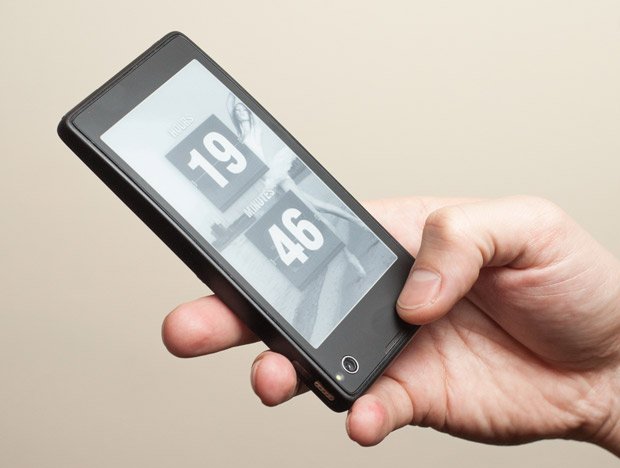
YotaPhone has one LCD display and a second e-ink screen which lets users see the information they want without having to wake up the phone
St Petersburg-based Yota is best known for making modems and router equipment. The dual-screen smartphone, which was first announced in 2012, is the company’s first mobile phone.
Yota plans to launch the phone in 20 other countries by March 2014.
It also features a 1.5GHz dual-core processor and a 12-megapixel rear camera and will cost 499 euros.
E-ink displays are commonly used for e-book readers and consume very little power. They are also easier to read in the sun than their LCD equivalents, but offer a slower refresh rate making them unsuitable for videos or most games.
The YotaPhone has some smart ideas about how the secondary e-ink screen could be used.
E-readers could be slimmer in future after a thinner screen was developed by the company E Ink.
The new screen technology, known as Fina, is up to 50% lighter and thinner than current screens according to the company.
[youtube vli_lssBxzM 650]
Samsung must pay $290 million to Apple for copying iPhone and iPad features in its devices, a Silicon Valley jury has ruled.
This verdict comes after a previous jury found Samsung owed Apple $1.05 billion for copyright infringement.
However, District Judge Lucy Koh ordered a new trial because she said that jury miscalculated the amount Samsung must pay.
Samsung is expected to appeal.
The jury’s ruling covers 13 of the 26 Samsung devices that Apple had argued copied its technology. These are mostly older Samsung tablets and smartphones.
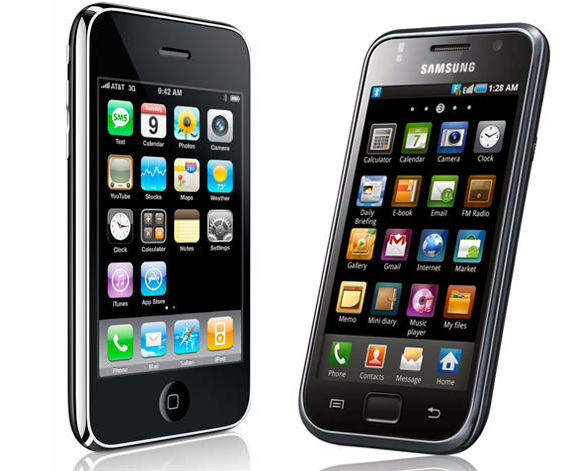
Samsung must pay $290 million to Apple for copying iPhone and iPad features in its devices
The $290 million figure comes on top of the $550 million Samsung owes Apple as a result of the initial verdict. In total, Apple has now been awarded close to $930 million in the case.
Apple shares traded slightly higher on the news. Samsung closed down slightly earlier in the day.
Samsung had argued that Apple should not have ownership over technology like what Samsung said was the “basic rectangle” shape of smartphones.
The jury in the courtroom – which is located just 15 minutes away from Apple’s headquarters in California – thought otherwise, awarding close to the $380 million Apple sought. Samsung said it owed just $52 million.
Samsung was found to have infringed Apple patents, including one that allows users to “pinch and zoom” on smartphone and tablet screens.
A separate trial to determine whether or not current Samsung devices violate Apple’s patents is scheduled for March 2014.
Apple has also asked Judge Koh to consider a sales ban against all of the older Samsung models that used Apple’s technology.
While Judge Koh has previously refused to issue such an injunction, a separate US Appeals Court asked her to reconsider this week.
For this year’s Black Friday all the retailers – Wal-Mart, Best Buy, Toys R Us, Kmart, Amazon and every other – are offering bigger and far bigger discounts.
This year there are several exciting development as far as Black Friday shopping is concerned. The most important development is the fact that the retailers are opening their doors a lot earlier than previous years. The first to announce early opening on Thanksgiving for Black Friday was none other than Wal-Mart. It was followed by almost every other top retailer in the country within no time.
Great offers are going to be available on every product including smartphone, tablet, laptop, camera, furniture, toys, clothes and almost every other product. You are going to get best deals during Black Friday and this include latest and top end smartphones like iPhone 5S from Cupertino based Apple and Korean based tech giant Samsung’s flagship handset Galaxy S4. And the best thing is the fact that the deals and offers are going to be really exciting.
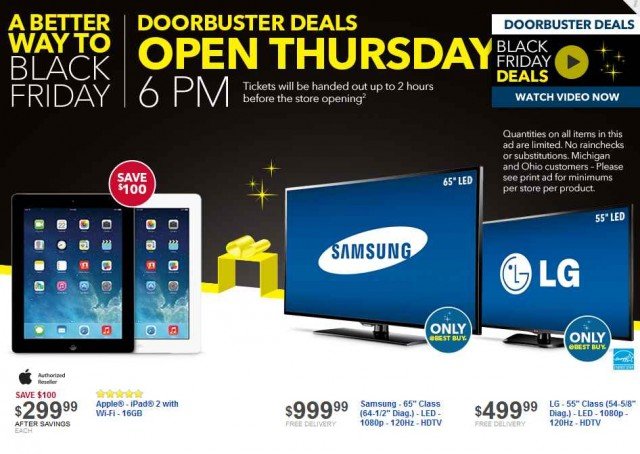
Like every year in the past Best Buy has taken the lead in offering great deal for Black Friday
When it comes to electronic items, you need to look no further than the top electronic products vendor, Best Buy. Like every year in the past Best Buy has taken the lead in offering great deals. This Black Friday electronic items are going to be in great demand and retailing companies are not going to disappoint the holiday shoppers. Not just the offers are going to become more enticing, they are becoming bigger and bigger. And the best thing about the Black Friday shopping is the fact that this time they are coming very early too.
Best Buy has brought every top product under Black Friday deal list. The retailing giant seems to have brought almost every great product to the table as far as Black Friday this year is concerned. If you want to go for gizmos including tablets, smartphones then there is no better place than Best Buy. It is offering 8GB Barnes & Noble Nook HD Snow tablet for $80, down from $129, an 8GB Nabi 7-inch kid’s tablet for $130, down from $180 and 16GB Apple iPad Air tablet with Wi-Fi and $100 gift card for $480. Samsung Galaxy S4 is available for as little as $40 and 16GB Apple iPhone 5s comes for $180 with contract. So as far as electronic items’ offers are concerned, there is no one offering deals like Best Buy.
[youtube 5fGe21AKT3M 650]
Here you can find some of the best tips, tricks and ghoulish tools for this year’s Halloween.
ZOMBIE-PALOOZA
According to Yahoo Search stats, Zombies are back at the top of the list of pop culture costumes. Look no further than your own smartphone for the start of a skin-puppet-palooza that puts you at the very center of this craze. Check out free apps Walking Dead (iTunes, Google Play), Zombiematic Camera (iTunes) and ZombieBooth (iTunes, Google Play). Each app uses chilling photo effects to transform you, your friends, even your pets, into a truly gruesome headshot that you can share with the (living) world.
If you want to bring even more undead action to life, take a look at Zombie apocalypse extravaganza World War Z. The newly released Blu-ray combo pack (around $20 on Amazon) includes an unrated version that was “too intense” for theaters — plus awesome behind-the-scenes footage that shows just how the blockbuster plague of corpse characters were made. You can leave it playing in the background of your Halloween happenings to create a “restless dead” effect, or use it to just get inspired.

Halloween 2013
Get all the Pin-spiration you need for everything else, from makeup tips, printable décor and even to braiinnnnn food on Pinterest. But if the edible eyeballs aren’t quite gory enough, just shuffle on back to your mobile device to add a pair of creepy peepers to just about anything via the Digital Dudz app (iTunes, Android). The animated 3-D gore this app brings to fright night is gut-rippingly great. You can make your costume to display the animation, or buy a Morphsuit (around $30) that comes with a special pouch to display the grisly scenes. There’s everything from an open-heart zipper wound exposing a still-beating heart to a scary clown face with moving eyes.
LIGHT UP THE NIGHT WITH LESS CREEP AND MORE CUTE
Moving on from the stuff of nightmares to the stuff that can give parents nightmares – kids costumes. Here’s how to make sure they’re both stellar and safe. Electronics retailer RadioShack is demonstrating just how simple it is to make costumes stand out from the crowd, and in the dark, with a few simple DIY designs. Just follow the directions on this Hacky-Halloween how-to using EL Wire to make simple fairy wings appear to take flight, or set your little wizard aglow with some LEDs and a Battery Powered Inverter.
TRACK OR TWEET
A brand new combination of a QR coded bracelet and smartphone app called Scan Me Kidz helps you track down kids in seconds. With GPS, you can keep kids in sight on the app, while the QR code contains information that when scanned can get youngsters back home or even alert people of allergies and medical conditions.
Even without a bracelet, there are a handful of free smartphone tracking apps such as Mamabear (iTunes, Google Play) and Trick or Tracker (Amazon, Google Play, typically $4.99 but free on Halloween) that help keep a watchful eye on kids. Both apps let you see where your kids are at any time, and they both let parents create a digital fence to get alerts if kids go out of a pre-set area.
Apple has unveiled the iPad Air, a top-of-the-range tablet that is 20% thinner than the previous version.
The 9.7in computer is 0.3in thick and weighs 1lb, which Apple claims is the lightest full-sized tablet on the market.
iPad Air is powered by the same A7 chip found in Apple’s iPhone 5S.
The launch comes at a time when some analysts have suggested that Google’s Android is about to overtake Apple’s iOS as the bestselling tablet platform.
Apple also announced a new version of its iPad Mini.
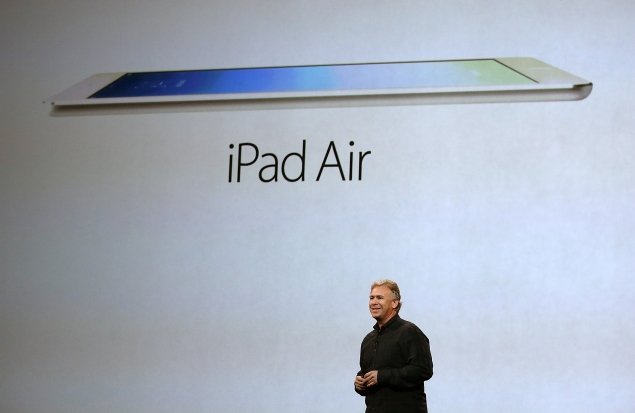
Apple has unveiled the iPad Air that is 20 percent thinner than the previous version
iPad Mini’s 7.9in screen has been upgraded to feature 2048 by 1536 pixels – the same as the larger model. It is being branded as “retina” to highlight the increased resolution.
Apple also announced that the latest version of its Mac operating system, Mavericks, would be offered at no cost to owners of computers already running any version of OS X released since 2009. It is the first time the company has not charged for a major Mac OS upgrade.
By contrast the full version of Windows 8.1 is sold for about $150, although it is free to existing Windows 8 users.
Linux-based Ubuntu has always been offered without charge. Chromebook computers also get free upgrades for Google’s PC operating system.
New laptops, productivity and leisure apps were also unveiled. However, Apple did not show off a new TV set-top box as some had speculated.
[youtube SZFYmVHZ4QM 650]
[youtube DO5CavHKkgI 650]
Samsung has launched Galaxy Round smartphone with a curved display screen.
The Galaxy Round will feature a 5.7in display.
The launch comes just days after rival LG said it would begin production of curved-screen phones next year.
Digital display technology has been progressing towards curved screens. Both Samsung and LG already offer curved organic light-emitting diode (OLED) television sets.
Samsung Electronics said the curved screen display would help consumers use some of the features on the phone, including those that enable users to check information such as date, time and missed calls when home screen is off, with more ease.

Samsung has launched Galaxy Round smartphone with a curved display screen
At the same time, users can also change music tracks on their phone, even while its display is off.
The Galaxy Round will initially be launched only in South Korea. The firm gave no indication of its plans for a global launch.
The global smartphone market has been growing rapidly.
According to research firm CCS Insight, worldwide smartphone sales will hit nearly 1 billion in 2013 – accounting for more than half the total of 1.7 billion mobile phones sold.
As result, smartphone manufacturers have been keen to offer new products to win consumers.
With display technology moving towards flexible and bendy screens, it is one area that companies have been looking at.
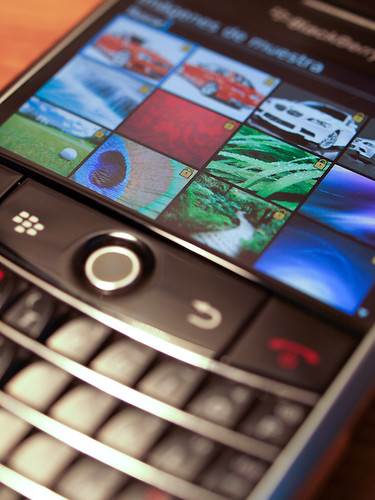
Image via Flickr by m lobo
It’s hard to remember a time before cell phones, and even to remember what life was like before smartphones. You might recall watching the news every night just to get the latest updates and sports scores, or carefully setting your trusty alarm clock and checking it several times on the night before a big work meeting. However, smartphones have made it so much easier to stay updated and current anywhere.
Make Your List, Check it Twice
Instead of carrying around paper and a pen, then searching through your purse or briefcase to jot down notes or items your grocery list, a notepad app on your smartphone has made this obsolete. Keep track of your important tasks or things to remember, all in one place.
Eliminating Paper Maps
Asking for directions is no longer necessary, nor is carting around a handful of maps while on vacation. Simply open your favorite GPS app and plug-in the address. As long as you are in range of a satellite, you will get systematic directions (and on some apps, even turn-by-turn directions with the capability to re-route for closed or blocked off roads) that keep you on course for your trip.
Stay Entertained Anywhere
If you get stuck in a doctor’s office waiting room, don’t weigh yourself down with heavy books or magazines to pass the time. Your smartphone can store hundreds of your favorite books and magazines, all in one easily accessible location.
Remember Every Event
The cameras in smartphones and tablets have created a new normal for documenting daily life. With photo sharing and editing apps, you can quickly snap photographs of your family, friends, or even what you’re having for dinner, and share content with people all across the world.
Deposit Checks From Your Phone
Skip the trip to the bank with mobile banking apps, many of which accommodate transfers between accounts, online bill pay, and mobile check deposit, where you simply take a photo of the check and the money is in your account within a few hours. These apps also eliminate paper waste, since you don’t have to fill out a deposit slip or write out a check to pay bills.
Digital Media Options
You can also cancel your newspaper subscription, since many national and local newspapers now offer a digital app where you can read the latest updates from your community and around the globe.
No More Math in Your Head
Don’t worry about calculating a tip or a percentage while you are out and about since your smartphone includes a calculator. Some devices also store credit and debit card information, so you can pay on the go.
It will be interesting to see how many new apps come into the marketplace in the future, possibly eliminating the need to carry a wallet, go to the post office or even receive your daily news. If your ID, store loyalty cards, and payment information is in one place, you might be able to travel light and simply carry your phone.
Blackberry and Microsoft have both cut prices on their flagship products in a bid to boost sales.
In the US, Blackberry has cut the price of the Z10 phone to as low as $49 with a contract – down from $199 four months ago.
In the UK, Microsoft dropped the price of the 32GB Surface RT to £279 ($438) from £400 ($628), with the 64GB model’s price down by the same amount to £359 ($564).
Both companies have developed the devices to show off their latest software.
And both have tried to compete with Apple, Google and Samsung on smartphones and tablets – with limited success.
In the US, the cheapest Surface tablet went down to $349 from $499.
Blackberry in particular is battling to revive its share of the smartphone market with the touchscreen-only Z10, which shows off its new BB10 operating system.
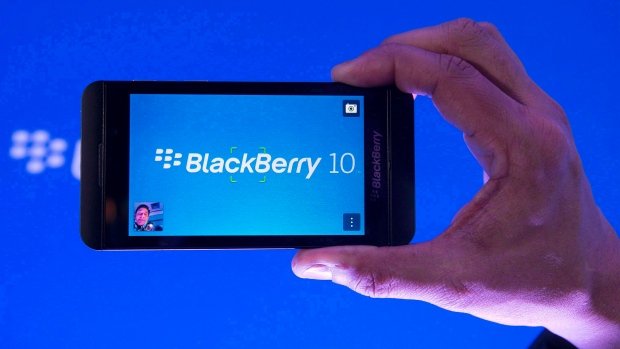
Blackberry has cut the price of the Z10 phone to as low as $49 with a contract, down from $199 four months ago
Users can get the Z10 through US carriers AT&T and Verizon Wireless, for $99 with a two-year contract, but the phone costs $49 with a contract at retailers Amazon and Best Buy.
The company reported an $84 million loss for its last quarter and refused to say how many devices running BB10 it sold – but it sold fewer phones in those three months than in the same period the year before.
Blackberry has said it shipped one million Z10s in the first three months of 2013.
Microsoft’s Surface tablet is intended to challenge the iPad and Android-based tablets and runs Windows RT, a slimmed-down version of its latest Windows 8 operating system.
Recent figures from analysts IDC show that 49.2 million tablets shipped in January, February and March – and about 900,000 of those were Surfaces.
Other Windows-powered tablets totaled 1.8 million units sold across all vendors. Apple’s iPad and iPad Mini accounted for 19.5 million of tablets sold.
“We’ve been seeing great success with pricing and cover promotions over the past several months on Surface RT in the US and other markets,” a Microsoft spokeswoman said.
“People who buy Surface love Surface, and we’re excited about all those additional people out sharing their excitement for Surface with other people.”
Microsoft also offers the Surface Pro, which runs the full version of Windows 8 and starts at $899 for the 64GB model. It has not had its price cut.
Samsung Electronics has reported a record quarterly profit in the first three months of 2013, boosted mainly by growing sales of its smartphones.
The South Korean company made a net profit of 7.15 trillion won ($6.4 billion) during the period, up from 5.05 trillion won a year ago. Profits also rose from the previous quarter.
Samsung’s results are in sharp contrast with rival Apple, which this week reported a drop in quarterly profits for the first time in a decade.
Samsung displaced Apple as the world’s biggest smartphone maker last year.
Bryan Ma of research firm IDC said that Samsung was doing “very very well right now”.

Samsung Electronics has reported a record quarterly profit in the first three months of 2013, boosted mainly by growing sales of its smartphones
“They have a lot of momentum behind what they are doing around phones, and clearly from a consumer perspective, they have a lot of excitement around their devices.
“They have a lot of their competitors wondering what they are going to do.”
Samsung has enjoyed great success with its smartphone division.
According to the latest figures, profits there rose more than 55% to 6.51 trillion won during q1 2013, from a year earlier.
Analysts said that a key factor behind Samsung’s success is that it offers a much broader range of models than its rival, Apple, which sells only the iPhone.
“It has a great strategy of targeting its devices to multiple consumer at multiple price points,” said Andrew Milroy of Frost & Sullivan.
Andrew Milroy explained that by offering a cheaper range of smartphones Samsung had been able to tap into a bigger share of consumers, especially in the emerging markets.
“The hardware Samsung is offering is as good as Apple in the eyes of many,” he said.
However, Samsung warned that growth in the lower-end smartphone market may slow in the coming months, not least because other manufacturers are also looking to enter the sector.
“We may experience stiffer competition in the mobile business due to expansion of the mid-to-low end smartphone market,” said Robert Yi, head of investor relations at Samsung Electronics.
Samsung’s latest smartphone offering, the Galaxy S4, is set to hit the stores on Saturday, April 27.
Launched earlier this year, Galaxy S4 allows users to control its screen using only their eyes and has the ability to take two different pictures at once.
Despite mixed reviews from critics, analysts expect it to generate robust sales. Some have even forecast sales of almost 22 million units in just the second quarter.
Meanwhile, Samsung’s biggest rival, Apple, is not expected to introduce a new iPhone model at least till the latter half of the year.
Many analysts have said that should give Samsung an opportunity to further consolidate its position in the sector.
[youtube wCGVJL1gjyo]
BlackBerry announces it has sold one million of its new Z10 smartphones in Q4 2012.
In better than expected results BlackBerry said it made profits of $98 million in the last quarter of 2012, after posting a big loss for the same period last year.
The Z10 handset is seen as crucial to the future of BlackBerry, which has struggled to keep up with new Apple and Android phones.

BlackBerry has sold one million of its new Z10 smartphones in Q4 2012
BlackBerry Z10 has been on sale for a month in the UK, Canada and other markets.
The Z10 went on sale with little fanfare a week ago in the US, BlackBerry’s most important market.
BlackBerry reports 1 million Z10 sales, but the figures do not include US sales.
BlackBerry was previously called Research In Motion (RIM), but changed its name last year.
Analysts greeted the results cautiously, saying that it was too early to judge the success of the Z10 and its sister device the Q10.
Earlier in the week, BlackBerry shares were hit when two major US brokerages expressed disappointment with the US launch of the Z10.
In a note to its clients, Citigroup described BlackBerry launch as “a big disappointment”.
The BlackBerry results also showed the company lost three million users over the year. Its handsets are now used by 76 million people, down from 79 million 12 months ago.
In total, BlackBerry said it shipped a total of around six million handsets in the three months to early March.
[youtube ZSBWSNewKSY]
Apple shares have tumbled 10% as investors fret over whether the company could lose its dominance in the smartphone market.
About $50 billion was wiped off Apple’s value after the biggest daily drop in the firm’s stock in four years.
Flat profits and record quarterly revenue of $55 billion were not enough to overcome disappointment over sales of the company’s new iPhone 5.
Analysts said the firm was in danger of becoming a victim of its own success.
Earlier, shares in some of Apple’s key Asian suppliers also fell.
LG, which provides displays for Apple products, fell 3.1%, and Hon Hai, which assembles iPhones and iPads, dropped 3.2%.
Apple was unable to repeat its usual growth in profits, which were unchanged from a year earlier at $13.1 billion.
The firm said late on Wednesday it had sold more iPhones (47.8 million) and iPads (22.9 million) in the final three months of last year than in any previous quarter, but investors had expected more.

Apple shares have tumbled 10 percent as investors fret over whether the company could lose its dominance in the smartphone market
Shares in the firm have fallen by a third since September over concerns the company may be losing its edge over increasingly confident competitors.
Shares currently stand at $460, down from over $700 four months ago. Apple still remains the world’s most valuable company, however, just ahead of Exxon Mobil.
On Thursday, a number of brokers cut sharply their price target for the shares, with Deutsche Bank slashing its forecast from $800 to $575.
The iPhone’s once dominant position is being challenged by Samsung and other makers of Android-based devices, which now make up a far greater percentage of overall smartphone sales than the iPhone.
Nokia, once itself the leading mobile phone manufacturer, reported on Thursday a return to profit in the final quarter of last year, with strong sales of its new Lumia smartphone, its first major product launch since the company teamed up with Microsoft.
Samsung is due to announce its results on Friday, and investors will be keen to find out how its successful Galaxy smartphones sold in the final quarter.
With Apple no longer seen as the market leader in innovation, some analysts believe it may now have to rethink its core strategy, which is based on focusing on a handful of premium products.
“Apple’s modus operandi to date has been to cream the high-end off each market, but as the company’s grown it may now need to target more of the mainstream,” analysts at Evercore Partners said.
Normura’s Stuart Jeffrey agreed: “To re-accelerate growth, Apple likely needs to launch new products, yet few seem likely before June.”
Others, however, argue that investors’ expectations are wholly unrealistic, and the company remains hugely successful.
[youtube PTcFDR2m3fg]
Mozilla has unveiled details of the first smartphones to be powered by its Firefox operating system.
Two handsets are to be made by a small Spanish firm called Geeksphone and will be targeted at developers ahead of the system’s formal launch.
The platform is based on the HTML5 web programming language and is being marketed as offering software writers more “freedom” than alternatives.
However, it faces competition from other soon-to-be-released systems.
Blackberry 10, Ubuntu, Tizen and Sailfish are all due for release for smartphones before the end of 2013, joining a market already occupied by Android, iOS, Windows Phone, Blackberry 7 and Symbian among others.
One analyst said he did not believe there was enough room in the market for all to survive.
The two new handsets are codenamed Keon and Peak.
Keon is the more basic model, including a 3.5in (8.9 cm) screen, a 3MP (megapixel) camera and Qualcomm’s low-end Snapdragon S1 processor.
Peak has a bigger 4.3in display, an 8MP camera and a more powerful Snapdragon S4. Mozilla noted this was probably “slightly faster” than the first generation devices that would be marketed to the public.
It added that Geeksphone’s phones would be made available for sale next month, but did not provide a price.
It said that when devices went on general sale they would be cheaper than many alternatives and would be targeted at emerging markets.

Mozilla has unveiled details of the first smartphones to be powered by its Firefox operating system that will be developed by Geeksphone
The Mozilla Foundation already uses the Firefox brand for its web browser – an offshoot of the 1990’s Netscape Navigator product. The software is developed by a community of volunteers and is run as an open source project, meaning its code is accessible to others allowing them to make their own modifications.
The same principles are applied to the operating system and Mozilla highlights the fact that coders can market their apps through their own websites or any store they wish in addition to the organization’s own marketplace.
It adds that the lightweight nature of the system means that apps should run smoothly and offer “optimal battery life” on low-end devices.
However, one analyst questioned whether this would make Firefox OS stand out, bearing in mind developers were already free to offer web apps for most other devices, and in the case of Android could also sell native apps outside Google’s own Play store if the user adjusted their settings to accept them.
“What Firefox is trying to do is make the web the app store and bring the openness of the web to phones,” said Nick Dillon, senior analyst at the consultants Ovum.
“But the question is what does this offer over a cheap Android phone to a consumer looking to buy a low-end handset?
“On Android you got Google services pre-installed and the 700,000 apps in its store but Firefox OS isn’t going to have these so will have reduced functionality.”
If Firefox OS is a success it should help drive the creation of HTML5 apps, which by their nature should work on any smartphone.
In theory this works to developers’ advantage as they can write a single program and then offer it across a range of platforms.
However, many view the language as a “work in progress” when it comes to mobile and believe that for the time being native apps – those coded for a specific platform – offer advantages.
“Applications that require more processing power and the full capabilities of a phone – games for example – lend themselves more to native applications,” said Nick Dillon.
“Although HTML5 has come a long way there are still gaps, like for notifications, that have not been fully standardized across all browsers – so if you are building an app that can alert users to the fact they have received a new message, it’s easier to do in a native app if you want to ensure a consistent experience.
“The trade-off, of course, is that it will take more time and effort to make the app for each platform.”
[youtube QLS8LEEVzL8]
Black Berry 10 media event will take place on January 30, but pictures of BlackBerry X10, the touchscreen, QWERTY-equipped smartphone, and a hands-on video of the full-touch screen Z10 have already reached the internet.
Known as the BlackBerry Nevada or N-series, the X10 has a traditional BlackBerry Qwerty keyboard, but loses the trackpad and soft keys that were above the keyboard on previous phones, and makes more room for a bigger screen.
The photos showing off BlackBerry X10 appeared on Instagram and were posted on fan forum CrackBerry. Pictures may not show the finished device (slightly different models have been provided to developers to get their apps ready for BlackBerry 10). However, they give a clear indication of RIM’s desire to match the physical keyboard with the versatility of a decent-sized touchscreen.
A hands-on video of the BlackBerry Z10, known as the L-series, was published by the Austrian website Telekom-Presse. The all-touch BlackBerry Z10 has a 4.2-inches display size, 2GB of RAM, 16GB internal storage and a 1.5GHz dual-core processor, according to the video. The website has also posted pictures of the smartphone and the interface.
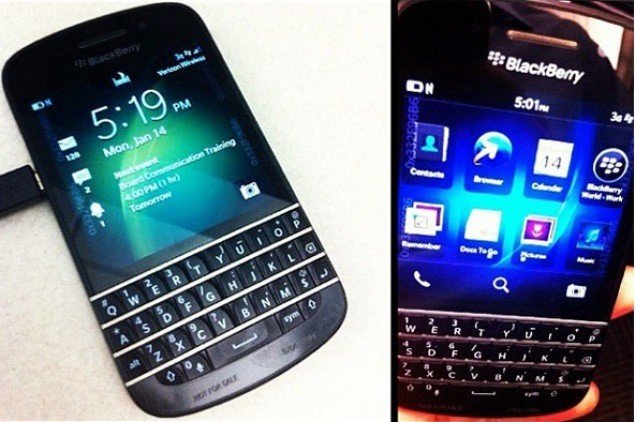
Pictures of BlackBerry X10 prototype leak on the internet.
Details about the BlackBerry 10 L-Series smartphones, from a RIM training manual, were published on the web.
TechRadar website says according to the documentation BlackBerry Z10, has a 1,280 × 768 4.2-inch HD display, 2GB of RAM, 16GB of internal storage and an 1,800mAh battery.
The X10 should have similar internal specs and, along with the Z10, two cameras. The front-facing camera will be 2 MP with a 2× digital zoom and 720p video recording. The back camera should be 8 MP and include a flash, auto focus, 1080 p video recording and a 5× digital zoom. BlackBerry X10 also said to have Wi-Fi, Bluetooth and GPS, as well as NFC.
Also, a training document from Canadian carrier Rogers, which details RIM’s next-generation operating system features and devices was posted on Crackberry forum. Most of it has been explained by RIM already. Very interesting is the Time Shift mode in Story Maker, which takes multiple photos milliseconds before and after the shutter is pushed. The best picture can be chosen from the frames before and after your photo where everyone blinked.
BlackBerry World has 70,000 apps and more than 15,000 apps have been submitted in the last days.
The Canadian BlackBerry-builder Research In Motion announces that 15,000 apps have been submitted in less than two days and its Secure Element Manager (SEM) solution for NFC (Near Field Communication) mobile payments has been approved by Visa. Because of its enhanced security features, RIM has been a popular choice for corporations, and recently with the upcoming smartphones, 1,600 companies have signed up for the BlackBerry 10 training program.
Prospective carriers to host the handsets have leaked worldwide in the last months: T-Mobile, Verizon, and AT&T in the U.S., Vodafone in the UK, and Virgin Mobile in Canada.
BlackBerry 10 global launch on January 30 will include press events in cities worldwide: New York, Toronto, London, Paris, Johannesburg and Dubai.
You can read more news and interesting reviews on mobile phones and other devices on phones4u website, where you can compare prices and find useful information.
Samsung Electronics has announced it expects to make a record profit for the last quarter of 2012, powered by growing sales of its smartphones.
It has estimated an operating profit of 8.8 trillion won ($8.3 billion) for the quarter, a 90% jump from the same period a year earlier.
That would make it the fifth quarter in a row of record profits for Samsung.
The success of its Galaxy smartphones helped Samsung overtake Nokia as the world’s biggest phone maker last year.
Analysts said that given the popularity of its smartphones, the South Korean firm was likely to see its profits grow further in the coming months.
“Not only are their smartphone sales growing, they have also learned how to make a good profit on those sales,” said James Rooney, chairman of Market Force Company, an advisory firm based in Seoul.
“Given these factors, this streak of record breaking quarters is likely to continue for a while,” he added.
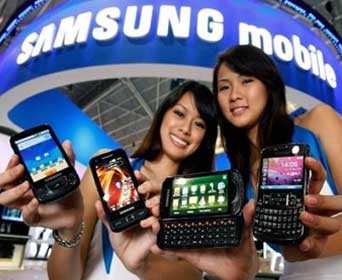
Samsung Electronics has announced it expects to make a record profit for the last quarter of 2012, powered by growing sales of its smartphones
One of the key drivers of Samsung’s smartphone sales in recent months has been its Galaxy S3 model.
However, the phone is facing increased competition, not least from rival Apple, which launched its iPhone 5 in September last year.
Other rivals, such as Nokia and HTC, have also launched new handsets powered by Windows Phone 8, in an attempt to increase their market share.
At the same time, there are also concerns that the pace of growth of sales that Samsung has seen in recent quarters could slow in the coming months.
“Investors are a bit concerned that Samsung’s momentum may slow in the first half after posting a series of record profits,” said Kim Sung-Soo a fund manager at LS Asset Management.
“The smartphone market is unlikely to sustain its strong growth, as advanced markets are nearing saturation,” he explained.
Kim Sung-Soo added that a slowdown in the smartphone division may hurt Samsung as other parts of its business, such as manufacturing memory chips and televisions, have already been impacted by a contraction in global demand.
Apple’s legal motion to have some Samsung mobile phones banned in the US will now be heard in court on December 6th.
A US jury on Friday ordered Samsung to pay Apple more than $1 billion after ruling it had infringed several of the iPhone maker’s patents.
The judge had originally suggested that Apple’s request would be heard next month, but now says that a hearing will take place on 6 December.
Shares in Samsung rose 3% on Tuesday on news of the delay of the hearing.

Apple's legal motion to have some Samsung mobile phones banned in the US will now be heard in court on December 6th
The South Korean firm had $12 billion wiped off its market value on Monday as its shares suffered their biggest drop since October 2008.
Apple wants eight Samsung smartphones banned.
They are the Galaxy S 4G, Galaxy S2 AT&T model, Galaxy S2 Skyrocket, Galaxy S2 T-Mobile model, Galaxy S2 Epic 4G, Galaxy S Showcase, Droid Charge and Galaxy Prevail.
The list does not include Samsung’s current flagship handset, the Galaxy S3, which was not involved in the case.
Nokia has decided to add Groupon offers to maps on its Lumia smartphones.
By clicking on a green “G” icon, US users can now buy Groupon’s discounted deal-of-the-day vouchers from their handsets and then locate the retailers participating in the offers by using Nokia’s navigation system.
An analyst said the deal could be an advantage for Groupon, which had so far not been “local enough”.
Nokia said it was interested in different ways of monetizing its maps.
The new location platform will be integrated into the phone’s Windows Phone 8 operating system.

Nokia has decided to add Groupon offers to maps on its Lumia smartphones
“It is to our benefit to ensure that many different companies use this, and there will be companies taking advantage of the platform who may compete with other elements of Nokia,” said the Finnish company’s head, Stephen Elop.
“But that has to be okay. It has to be, you have to think that way. The competition… is not with other device manufacturers, it’s with Google.”
Nokia had been trying to make its maps available to a wide range of people, said Martin Garner, an analyst from CCS Insight.
He added there were already some major web players using them, including social network Foursquare and Yandex, Russia’s main search engine.
“It’s not a surprise that Groupon is doing this, it’s a logical extension,” he said.
“There’s a whole area of web use that could be made better if it used local information and maps, and one of the big weaknesses of Groupon’s strategy has been that it hasn’t been local enough.
“And by working with Nokia they can do this better. Lots of people are very interested in the local commerce, and this could be a way of making this work.”
Apple has announced that OS X Mountain Lion, the latest version of its Mac operation system, will be released on Wednesday.
OS X Mountain Lion makes it easier to share material to social networks and also introduces a notification panel similar to that found on many smartphones.
The news was revealed in the company’s third quarter earnings release.
Mac sales were 2% up on the year, but the results fell short of many analysts’ forecasts.
Apple’s shares dropped about 5% in after hours trading on Wall Street.

Apple has announced that OS X Mountain Lion, the latest version of its Mac operation system, will be released on Wednesday
Apple first announced the latest update to its operating system in February. The update continues a trend to introduce features to its desktop and laptop families that have already been implemented on its iPad and iPhone mobile devices.
These include the ability to upload and synchronize material with its iCloud internet storage service; the introduction of the iMessage service allowing text message-like chats between the firm’s computers and handsets; the ability to easily share material to Twitter; and an application to compare the user’s video game scores against those of their friends.
Apple has also taken steps to aid its expansion in China including the adoption of Baidu as a search service built into its web browser’s toolbar, and buttons to make it easy to share material to the Sina Weibo microblog, and the video sites Youku and Tudou.
However, the firm’s decision to keep its Mac system distinct from iOS for mobile devices is set to be challenged by October’s Windows 8 release by Microsoft.
Microsoft is offering users the chance to run the same system on both their tablets and desktop computers, making it easier to share software between them.
Windows 8 – and its touchscreen Metro apps – have been described by Microsoft as the biggest revision to its interface in over a decade. But one analyst said Mountain Lion was more of an incremental step forward.
“While there are a lots of new features this is not a major upgrade like the last version Lion was,” said Brian Blau, research director at tech research firm Gartner.
“But Apple has also been improving its Office-like software and creation applications along the way, so maybe it didn’t need such a big revision. And you have to bear in mind it is only charging $20 for the change.”
By contrast Microsoft is charging $39.99 for a Windows 8 upgrade, while Linux-based systems, such as Ubuntu and Debian, can be downloaded for free.
Samsung Electronics says that it expects its profits to surge 79% in the second quarter as sales of its smartphones continue to grow.
It has forecast an operating profit of 6.7 trillion won ($5.9 billion) for the period, its highest quarterly profit since 2008.
Samsung overtook Nokia as the world’s biggest maker of mobile phones earlier this year.
Analysts said its profits may rise even further in the coming months.
“Earnings will be stronger in the current quarter as sales of the high-end Galaxy S III will increase dramatically and drive the telecom division’s earnings to above 5 trillion won,” said Nho Geun-Chang an analyst with HMC Investment Securities.
“We estimate shipments of the Galaxy S III will reach 19 million units in the third quarter.”

Samsung Electronics expects its profits to surge 79 percent in the second quarter as sales of its smartphones continue to grow
Samsung launched the Galaxy S III, the latest version of its Galaxy range of smartphones, in May this year, and the gadget has been well received in the market.
Last month, the head of Samsung’s mobile phone division Shin Jong-kyun said that the firm expects to sell 10 million units of the model by July.
While it has enjoyed early success, some analysts were of the view that its sales may slow towards the end of the year due to the widely-expected launch of the latest version of the Apple iPhone.
The iPhone is seen by most analysts as the biggest rival to Samsung’s smartphones.
“We expect a correction in Samsung’s earnings in the fourth quarter, as the launch of the new iPhone will lead to a decline in Samsung’s profit in the high-end smartphone business,” said Park Jong-Min a fund manager with ING Investment Management.
Increased competition from the iPhone is not the only challenge Samsung has to deal with in the coming months.
It is also involved in a number of legal disputes over patent infringements with Apple in various countries across the world.
Earlier this month, a court banned sales of Samsung’s Galaxy Nexus smartphone and also its Galaxy Tab 10.1 tablet PC in the US, until it decides on the continuing patent case between the two firms.
There are concerns that the ban may hurt Samsung’s sales in one of its key markets.
Analysts said the biggest fear for Samsung is that the dispute may become bigger and impact other Samsung products, including the Galaxy S III.
“What they are worried about are the legal spill over effects,” said Jasper Kim of Asia Pacific Global Research Group.
“How Judge Lucy Koh’s decision to block some of these Samsung smartphones into the US market, which is Samsung’s largest mobile carrier market, will effect Galaxy S III sales. That’s what Samsung is really worried about.”
Established Apple site 9to5Mac revealed a leaked image of what is claimed to be the iPhone 5, and the site, which has a good record for reporting accurate leaks from Apple, has a plethora of details about the new model.
For the first time, the iPhone shakes off the 3.5inch screen-size, bowing to the latest generation of Android smartphones, which over the course of the last two years have shifted the typical screen from three-to up to four or even five inches.
With Apple’s Worldwide Developers Conference due in San Fransisco on Monday, June 11, iPhone fans are hoping to get either a glimpse or a confirmed release date in just a few weeks.
9to5Mac estimates the new screen size at a very specific 3.999inches, with a resolution of 1136×640, giving the screen the “Retina”-like feel of the new iPad.
There appears to be a choice of colors – a black model and a white model – as has been the case with the last few models of iPhone.
Other hints given away by the photo – and more are available at 9to5Mac – are that Apple has redesigned the dock connector to be smaller.
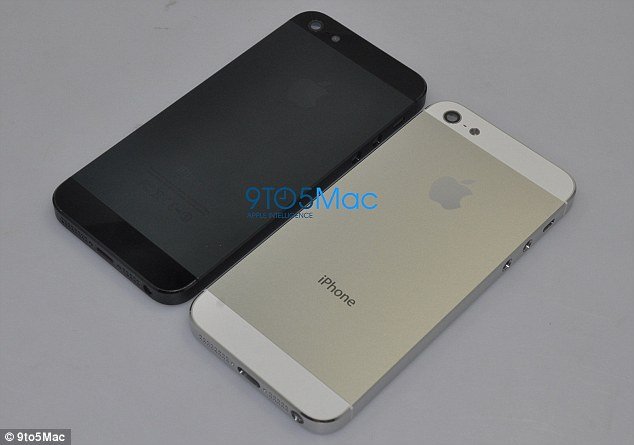
Established Apple site 9to5Mac revealed a leaked image of what is claimed to be the iPhone 5
This may end up making older accessories – from charger cables to speaker docks – incompatible, but there will likely be adapters released to ensure older accessories still work.
Speaking of compatibility, developers may need to update their apps to take advantage of the larger size, or there may be a situation similar to when the first iPad was launched, when iPhone apps would appear with a big black border around the age.
The iPhone 4S was released in October last year, and Apple is expected to follow suit with an Autumn launch this year – although, as ever, the company is staying notoriously tight-lipped.
Following the death of co-founder Steve Jobs last year, new CEO Tim Cook will lead the WDC conference this year, to the gathered developers about the future of Apple, upcoming products and changes to both Mac software software and iOS, the mobile version of Apple’s operating system.
Two weeks ago Apple registered the iPhone5.com domain name, amid rumors that the next model is the final model approved by Steve Jobs.
Bloomberg cited a source “with knowledge of the plans” surrounding the new iPhone who claimed that Steve Jobs played a key role in the development of the device, even while on medical leave from his company.
A shakeup in the design of a larger-screen iPhone could go a long way in boosting its “wow” factor, convincing fans to trade in their old iPhones for new ones, said Shaw Wu, an analyst at Sterne Agee.
“Not only do users pay for features, but they also pay for aesthetics and design.
“That’s as important, or more important, than features,” Shaw Wu said.
“People love the current design – but it’s 18 months old.”
With the release of Android devices such as the HTC One X and the Samsung Galaxy S3, packing quad-core processors and almost five-inch screens, the impetus lies with Apple to innovate and revolutionize the market once more.
According to research firm Strategy Analytics, Samsung Electronics has overtaken Nokia to become the world’s largest maker of mobile phones.
Nokia took the top spot in 1998 from Motorola, but in the first quarter of 2012 Samsung shipped 93 million phones compared to almost 83 million by Nokia.
Samsung also reported its highest quarterly profit since 2008.
Net profit was 5.05 trillion won ($4.5 billion) in the quarter ending 31 March, up 81% from 2.78 trillion won last year.
Samsung is also the world’s biggest TV and flat screen maker.
“We cautiously expect our earnings momentum to continue going forward, as competitiveness in our major businesses is enhanced,” said Robert Yi, head of investor relations at Samsung.
Samsung said its IT and mobile communications division, which manufactures the smartphones, made an operating profit of 4.27 trillion won during the period, as revenues in the division surged 86% from a year earlier.
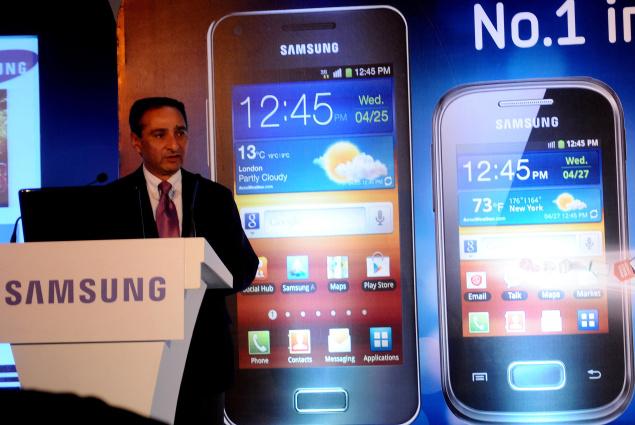
Samsung Electronics has overtaken Nokia to become the world's largest maker of mobile phones
Samsung will unveil the latest version of its Galaxy range of phones on 3 May.
The Galaxy range has been very popular and helped Samsung overtake Apple to become the world’s biggest seller of smartphones.
“The smartphone market has almost only two players, Samsung and Apple,” said Lee Sei-Cheol of Meritz Securities.
“Since its Galaxy3 phone is being unveiled in May, Samsung will keep enjoying sales growth in its mobile phone division.”
Global demand for smartphones is expected to increase further in coming years, with research firm IDC forecasting that global smart phone shipments will rise by a third to 659.8 million units in 2012.
Analysts said that given its robust growth and dominance in the sector, Samsung was well placed to benefit from this growth and boost its market share.
However, given the robust growth in the sector, other smartphone makers are also keen to introduce new products and tap into the fast-growing market.
Samsung is facing stiff competition from rivals such as US-based Apple, Finland’s Nokia, and Taiwan’s HTC.
Apple, which said earlier this week that it sold 35 million of its iPhones in the first quarter, is expected to launch a new version of its handset later this year.
Analysts said that as more models are launched, manufacturers may have to the cut price of their handsets in a bid to attract consumers, a move that may see profit margins shrink.
“Samsung’s handset earnings may weaken in the latter half of this year, with the possible launch of Apple’s iPhone 5,” said Brian Park of Tong Yang Securities.
Another area of concern for Samsung is likely to be its chip manufacturing unit, which has been hurt by slowing global demand for personal computers.
The firm is one of the world’s biggest makers of dynamic random-access memory (DRAM) chips, which are widely used in personal computers.
However, demand for these chips has been declining as consumers turn to tablet PCs, which mostly use flash memory chips.
At the same time, falling prices have also hurt profitability in the sector.
Samsung’s memory-chip division saw its profits slide by 54% during the first quarter when compared with the same period a year earlier.
The company said it expected the demand for DRAM chips to rebound in the coming months, but warned that growing competition in the sector “will lead to a price decline”.
A new wave of “silent camera” applications – some specifically designed for voyeurism – has been blamed for a huge rise in illicit photography in Japan.
Most smartphone cameras have a built-in shutter noise to prevent the camera being used to take pictures without people’s consent.
There were 1,741 incidents last year in Japan, according to a report in Mercury News, with an increase of 60% on the figure five years ago.
The problem is blamed on the rise in “silent camera” apps – including ones which deliberately conceal what the user is doing by putting an innocent-looking email or text message on screen while he or she photographs.

Most smartphone cameras have a built-in shutter noise to prevent the camera being used to take pictures without people's consent
There are dozens of silent camera applications already available on Android Market and iTunes store – and on Android particularly, and several that appear to market themselves as being for stealthy photography.
Mercury News report says: “The latest applications include <<upgraded versions>> that enable people to silently take photos while an email or website is displayed on the phone’s screen to provide cover for the surreptitious picture-taking.”
Japanese academics have called for regulation of silent photography applications – saying that they are being used for crimes.
With Google’s “anything goes” policy on Android, where applications are not vetted before publication on Market, and users can also download apps from elsewhere on the web, it will be very difficult to police.
Most smartphones also include a way of disabling the noise of camera applications even in the built-in apps.

























